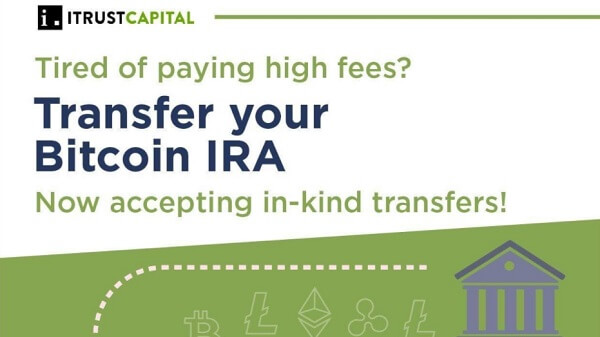
Decentralized finance is one of the most promising and indeed the fastest growing ecosystems within the crypto and blockchain space. Total value locked in DeFi — a measure of the total value of assets committed to the DeFi ecosystem — has been approaching the $40-billion mark this month, which indicates a value increase of around 200 times since February 2019. And 2021 has just started, promising some major developments for the DeFi space.
Related: Was 2020 a ‘DeFi year,’ and what is expected from the sector in 2021? Experts answer
DeFi has made a lot of changes in our world. Some argue it has started the shift to real decentralization; from the rise of the Web 3.0 movement to decentralized governance, others see it as the solution to the broken legacy finance and the future of banking.
Despite all the benefits that DeFi offers, there are some problems and challenges that should be addressed. The future success of the ecosystem depends on accurate and secure data that is free from manipulation and thus less vulnerable to exploits, which requires the implementation of quality-control mechanisms. Improving transaction speeds and the peer-to-peer aspect also remain among the important issues in order to gain wider adoption and sustainability to the industry.
Meanwhile, the major obstacle for DeFi development remains the constantly increasing gas fees on Ethereum, which were above $1,000 this month. And while the long-awaited Ethereum 2.0 transition, which aims to address this problem, “will save the day,” some argue that DeFi users shouldn’t wait for Eth2 to prove what it claims it can do.
Related: The Ethereum 2.0 factor: Changing the way DeFi projects operate
Undoubtedly, Ethereum has been overtaking Bitcoin (BTC) as the leading DeFi protocol infrastructure and network. Nonetheless, some experts state that “it’s hard to imagine a future where BTC is not used in DeFi products,” while others claim that Bitcoin “will eventually be forced to break its 21-million supply limit to remain sustainable and relevant” as DeFi keeps growing and flourishing. Cointelegraph reached out to experts in the DeFi space for their opinions on the following question: Will DeFi remain almost exclusively on Ethereum, or will it become big on other layer ones, or will new projects adding smart contracts to Bitcoin steal some thunder?
Amadeo Brands, chief technology officer of DeFi Capital:
“I am interacting and experimenting with DeFi on a day-to-day basis, and I follow all developments closely. We are still in the early days, but so far, the first-mover advantage and the infrastructure built on Ethereum give the ETH ecosystem a big head start. I do see a future where we see a multichain universe for DeFi infrastructure where less security is needed for data and transactions can be synchronized and settled. But do remember the focal point is not performance but trust in DeFi. Some complex financial transactions now possible in DeFi would cost a significantly higher amount in fees and give less trust and more bureaucracy when compared with working in CeFi systems.”
Andre Cronje, independent DeFi developer and founder of Yearn.finance:
“But, isn’t the question answered? DeFi is already on other chains. Doesn’t seem hypothetical.”
Anthony Khamsei, founder of Golden Algorithm:
“While Ethereum has been the innovator of smart contracts, its extensive infrastructure size makes it a slow mover regarding necessary changes it has to make to adapt to users’ needs in the current market. Gas fees have been continuously on the rise since DeFi bloomed up, and since the amount of fees spent on the Ethereum network reached its all-time high, it’s been contributing to others taking a piece of the pie. Let’s not forget, for many smaller retail investors, the current gas fees on the Ethereum network can be higher than the annual percentage yield they would gain from staking a full year.
Sure, we have projects such as Stacks 2.0 with hopes to make Bitcoin programmable, but I think Bitcoin’s main functionality will stay unchanged as a long-term store of value asset. This functionality is the most sought-after since Bitcoin remains the largest market-dominant cryptocurrency today.
I think winners in the DeFi space will be fast movers with robust technology, such as Project Serum built on the lightning-fast Solana blockchain with much cheaper transaction fees that back it up with massive liquidity, and interoperable with Ethereum and Bitcoin. And as long as the dominant cryptocurrency exchanges support direct withdrawal to these sets of assets, they will flourish.”
Corbin Page, head of product at ConsenSys Codefi:
“DeFi was started with the ethos of open permissionless access that drives competition and ultimately better financial products for more people around the world. We’ve seen it with Uniswap/SushiSwap, stablecoin battles, etc., and that competition is a good thing and should be encouraged.
Will we see DeFi on other chains? Yes, of course.
But just as Bitcoin has ‘won’ the store-of-value use case for crypto, Ethereum has a massive lead in the ‘permissionless settlement’ use case. You can see it in stablecoin usage/volumes (ETH dwarfs other L1s) and cross-chain bridges that always include Ethereum mainnet. So, we’ll see other L1s and L2s aggressively add DeFi products but most (if not all) will be bridged back to Ethereum for ultimate, censorship-resistance settlement. We believe we’re at the very beginning of a decade-long cycle of innovation and killer apps in the DeFi space across a number of different L1 and L2 blockchains.”
Kyle Kistner, co-founder of bZx:
“Ethereum continues to be the primary interest of serious builders in the industry, but it’s clear that other layer ones are starting to accrue interest and talent. In our view, the four most important layer ones right now are Polkadot, Avalanche, Binance Smart Chain and Solana, respectively. Polkadot has the largest concentration of real teams building DeFi applications that could see real volume. We are already working with Reef Finance and Tidal Finance to integrate into their yield farming and insurance pools. We’re working with the Avalanche team to deploy our smart contracts on their chain. Lastly, we are likely deploying on BSC in the near future. BSC has substantial wash trading volume, but we also see real activity and yields based on our conversations with farmers at the vanguard of the ecosystem. The fact that BSC leverages the developer tooling and wallet infrastructure of Ethereum makes it attractive in the medium term, though we have concerns longer term regarding its centralized nature.”
Rune Christensen, CEO of Maker Foundation:
“I believe DeFi will remain on Ethereum, and if it moves to a more scalable layer one, it will most likely be a winner-takes-all scenario.”
Stani Kulechov, founder and CEO of Aave:
“Most of the DeFi is headquartered on Ethereum, including Aave Protocol. The recent congestion on Ethereum of course has sparked some additional interest on L2 solutions and side-chains, such as Matic, that has been getting recently lot of traction. These solutions do reduce the network fees and might work well on parallel with Ethereum. I don’t think Bitcoin will have smart contracts at least for a long time. It would require changes on the protocol itself and the Bitcoin community to have a consensus on such a decision.”
These quotes have been edited and condensed.
The views, thoughts and opinions expressed here are the authors’ alone and do not necessarily reflect or represent the views and opinions of Cointelegraph.
This article does not contain investment advice or recommendations. Every investment and trading move involves risk, and readers should conduct their own research when making a decision.





 Bitcoin
Bitcoin  Ethereum
Ethereum  Tether
Tether  XRP
XRP  USDC
USDC  Lido Staked Ether
Lido Staked Ether  TRON
TRON  Dogecoin
Dogecoin  Cardano
Cardano
Be the first to comment